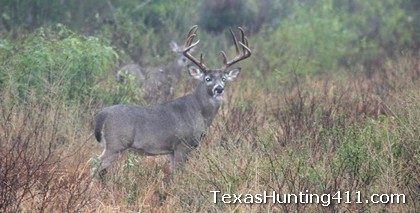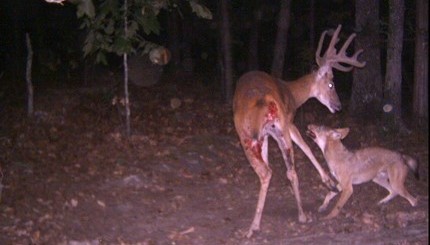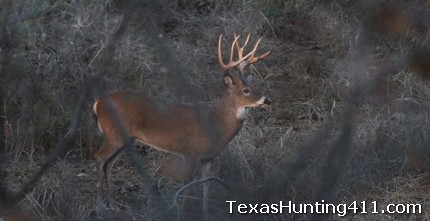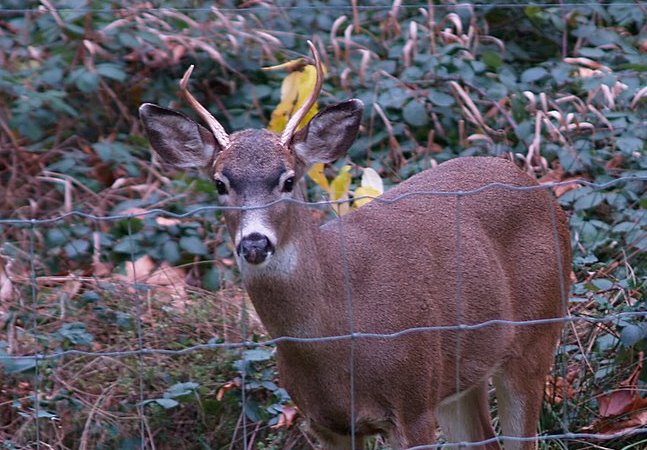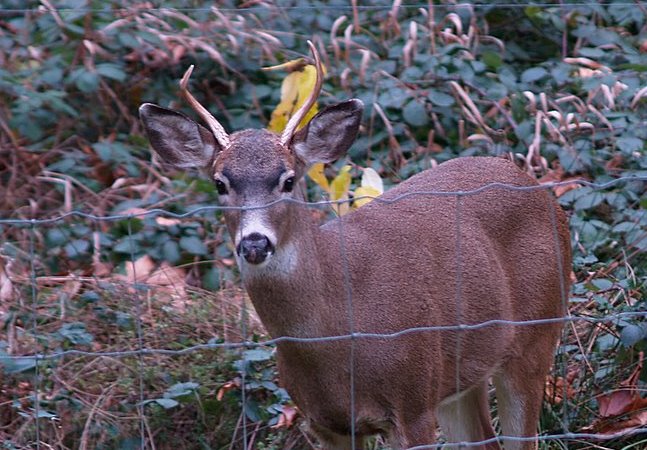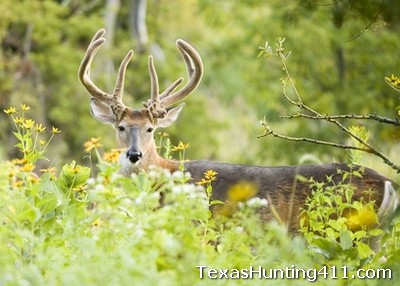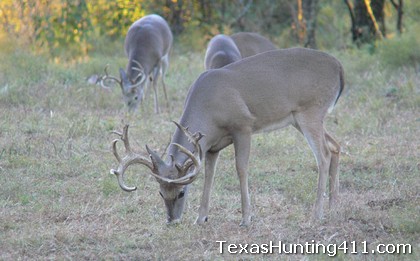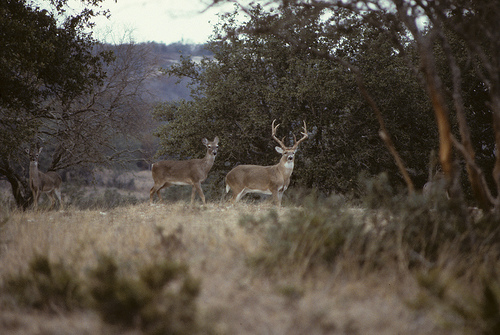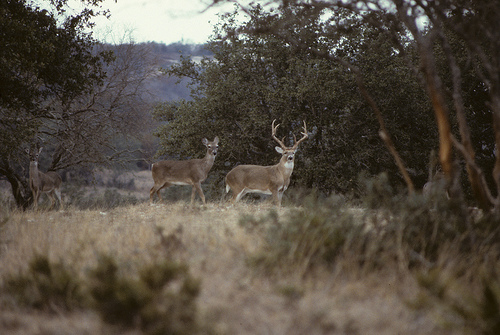There are many debates when it comes to white-tailed deer hunting. Sit around any campfire during deer season and you’ll get a taste of what I’m talking about. Just about everything is up for debate or, uh, argument. The age of a buck, Boone and Crockett score, which deer are cull bucks, and whether or not someone should shoot a spike buck are all common topics hunters “discuss.” However, the hot topic in recent seasons has been, you guessed it, antler restrictions. With antler restriction regulations on whitetail bucks now canvasing much of Texas, check out what Texas Parks and Wildlife Department biologist Gary Calkins recently wrote on the issue:
“In the world of entertainment, the measure of success can often be seen by the number of T-shirts with a saying or logo made popular by a band or television show. In a way, the measure of success, or lack thereof, in the wildlife field, can be measured by the number of times we are stopped at the gas station and asked about the topic of the day. These discussions can range from rattlesnakes to bears, to the weather, and the impacts on turkeys. But in recent years, one of the more prevalent topics brought up is “antler restriction regulation.” Phone calls, hunting blogs, coffee shops and gas stations have all been the venue to praise or decry this regulation.
First order of business that I can’t stress enough – this is NOT a trophy buck regulation. Even though we have stated that numerous times, it can’t be stressed enough. The driving force behind this regulation is an improved age structure in the buck segment of the deer herd which has many human, social and deer-related biological impacts. Everything from hunter satisfaction to fawn recruitment are impacted by this management approach.
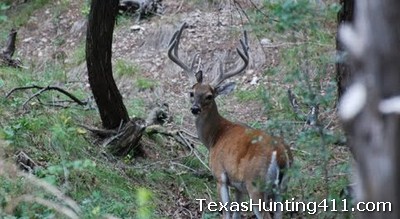
The single-most important deer management decision that can be made on any property, in any given year, is the simple “to pull the trigger or not to pull the trigger – that is the question.” With the smaller property sizes and number of hunters in Texas, that simple question has huge impacts across the landscape. The premise of this regulation is to help with that decision and lead to a better deer herd and ultimately a better hunting experience.
Without going into all of the boring details, this regulation allows for the harvest of bucks with an inside spread of 13 inches or greater, or at least one unbranched antler. This provides protection to young and middle-aged deer, allowing them to grow and mature, and leads back to that improved age structure I mentioned earlier.
Today’s society operates at high speed all the time. We have Internet, cell phones, and almost every other conceivable device to “stay connected” – even cell phones that go to the Internet. We have become accustomed to instant satisfaction in nearly every aspect of our lives. With wildlife management, this regulation being no exception, instant satisfaction isn’t part of the bargain. Deer couldn’t care less what new “app” is out there for the newest gadget; nature still works at the same tempo it always did, so we are the ones that have to adjust.
With changes in management approaches, it can take several years to reap the benefits, simply because we have to wait for nature to adjust and catch up. From the outset, we said that the first two or three years may be tough deer hunting after the change to this regulation, but that then hunting would improve. We have also heard everything from “the deer have to have narrow antlers to run through the woods so they will never get bigger” to “if we kill all the big ones, only the little ones will be left.” Years of data can show that neither of this is going to happen and that we are seeing an improving trend in the harvest in the Pineywoods and throughout counties with antler restrictions.
The area that Texas Parks and Wildlife defines as the Pineywoods consists of 27 counties running roughly from Texarkana to Jacksonville, then to Houston and over to Beaumont, with the state line as the eastern boundary. This entire area had a deer herd that was being harvested too heavily in the younger segment of the buck herd.
When antler restrictions were first implemented, the northern 16 counties were the first group to have the new regulation. This decision was based on the fact that these counties were one-buck counties, had over 65 percent of the male harvest being 1.5 and 2.5-year-old deer, and through open “come one, come all” scoping meetings, had overwhelming public support to move forward. This initial group of 16 counties adopted antler restrictions regulations, with the 2006-07 hunting season being the first year to operate under the regulation.
The 2009-10 hunting season was the initial year that the southern 11 counties in the Pineywoods operated under the regulation, with the just-completed season being only the second to see the regulation implemented. Even though this group of counties was operating under a two-buck bag limit, the harvest of immature deer was exceeding the 65 percent benchmark used in the north as well. Scoping meetings were also held across this area, the year before, to gauge public support, and while not as strong as the northern counties, the scoping meetings showed favorable response for the concept.
Since the initial 16 counties have a little more history under the regulation, analysis of the harvest data is made a bit easier. When looking at the harvest data for the five years averaged prior to the implementation of the regulation, over 71 percent of the male harvest was made up of 1.5 and 2.5-year-old bucks. Simple math says that when you kill that many of them that early, there just aren’t going to be many that grow old. No matter what the genetics of that animal are, nor how much he eats, unless he grows up, he will never be able to show the potential of those antlers on his head.
Since the implementation of the regulation in the northern counties, age structure has shifted down to 53 percent of the harvest being in that same age bracket. The most noticeable is the shift in the harvest of 2.5-year-olds from nearly 30 percent of the harvest, down to roughly 20 percent; and having a higher percentage of 3.5-year-old bucks in the harvest than 2.5’s. Plus, the harvest of 4.5-year-olds and older is now at 17.5 percent of the harvest – nearing the numbers of 2.5-yearolds harvested.
Since the southern 11 counties only have two years under their belts, those can’t be analyzed on their own simply due to a lack of data. However, looking at the data from the entire Pineywoods lumped together, it shows a similar trend as the northern counties by themselves. From 67 percent of the harvest being the 1.5 and 2.5-year-old deer in 2005, it now shows that number to be just over 54 percent. The numbers of 4.5-year-olds and older in the harvest is almost identical to the northern counties and increasing.
We realize that it seems like a long time since the regulation went into effect in that first batch of Pineywoods counties, but we haven’t even gone through a full generation of deer in that area. Mother Nature does not get in a hurry with things like this, so we have to practice patience as well. However, all indications are that we are going in the right direction. We are not only collecting age structure information; other research projects have been ongoing to determine the effects of the regulation on the deer population. Recently a research project was completed to see if the breeding dates of the does had shifted as a result of the older age structure in the buck segment of the herd.
Results are very preliminary, but appear to show that very trend. If it is confirmed, it will mean fawns on the ground earlier, having a better chance at survival, and a more stable deer herd. In the meantime – go hunting, enjoy the resource, take that extra minute to not only evaluate the antler spread of the deer, but to simply enjoy the moment and the opportunity to be out there immersed in nature. If you shoot the first one that comes out, you will just have to go home. There are way worse ways to spend your time than deer hunting in Texas!”
